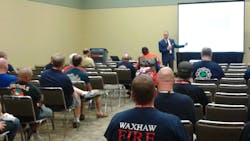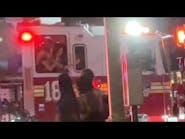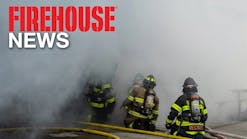FHExpo: Reinhardt Offers Six Steps for Size-up
Source Firehouse.com News
The size-up is one of the most critical components of fireground operations. As such, it’s important for the first-in officer to have a solid understand of what they must accomplish through this key task. In his Saturday morning session “The Six-Step Size-up: Tactical considerations for the first-in officer,” Lt. Erik Reinhardt established a simple plan for size-up success.
Reinhardt identified six components of a sixe-up for first-in officers:
- Pre-alert
- Alert
- Response
- Arrival and BIR
- Deployment
- Ongoing
Pre-alert
Reinhardt explained that the pre-alert is all about the tasks that need to be conducted at the beginning of the shift, well before a call comes in to ensure operational readiness—tasks like checking your riding/job assignment, gear, BA, radios and tools. It’s also important to check the rig to make sure it’s ready for service.
Alert
When the bells go off, Reinhardt said, officers should draw a mental picture for themselves based on their existing knowledge. This picture is based on factors including the neighborhood, time of day, occupancy, building construction, exposure issues and water considerations.
Response
The response itself is obviously a critical part of the process, and a big part of it will depend on staffing levels—and their competencies. “The competency level of your crew is going to dictate your tactics,” Reinhardt said. “You’ve got to train your crew to the level of your expectations.”
Other key factors include paying attention to the radio on the call and even listening to the banter of the crew so you have an early idea of what they are thinking. Reinhardt noted that if you have headsets, wear them. He also advised opening the map book and making sure the driver knows where they are going, double-checking the address along the way. Start thinking about the water supply early, Reinhardt advised, and figure out the arrival order. “If you don’t have a set response order, you should work on planning that,” he said.
Initial arrival
When arriving on scene, Reinhardt said, it’s critical to ensure even the most basic elements of the call are correct. “Before you commit and establish water, make sure you are on the right street,” he said. The dispatcher may have provided the location based on the caller—not the exact fire location—so check the notes first. Water supply will also play a major role in apparatus positioning, he noted.
The officer’s behavior upon arrival is a critical factor. “The first-in officer sets the tone for the entire incident,” Reinhardt said. “Take a second and think about what you want to say. Calm is contagious.” At this point, the officer needs to “paint a picture” of the incident, which can be easily accomplished through answering a few simple questions: What is it? How big is it? What do you see? What are you going to do about it? “Don’t forget about the big picture of why we’re there,” Reinhardt said. “Don’t over-complicate it.” However, because so people often have different definitions for expectations for what constitutes a “working fire,” for example, it’s important that the size-up be detailed enough to provide the key information to incoming units.
Reinhardt underscored the importance of completing a thorough 360 size-up. “It’s critically important for the fire officer to get around to the rear of the fire,” he said.
At this point, he added, it’s time to think about SLICERS: Size-up the scene; locate the fire, identify and control the flow path; cool the heated space; extinguishing the fire; and rescue and salvage.
Deployment
Reinhardt established several factors that dictate deployment tactics: staffing, occupancy/time, entrapment/life hazard, training levels, offensive vs. defensive, and exposure issues. One way to practice running through these factors is to show your crew pictures of fire incidents and walk through how you would handle it as a team.
When it comes time to attack the fire, Reinhardt emphasized the importance of having both the right line and the right tactics. “You don’t go bear-hunting with a .22,” he said, referring to selecting the wrong line for the type of fire. It’s also possible to have the right line but then select the wrong tactic, like entering the structure from the front door when the best approach might be to hit the fire from an exterior position.
Ongoing
There will be several ongoing tactics to consider throughout the event. The process is not necessarily linear, so ensure you are continuously evaluating the scene.






